The very first time I visited Rome, I was struck by the city’s undeniable beauty. Walking around felt like visiting an outdoor museum replete with memorable landmarks and sights.
Editor’s note: This article is part of our series on travel guides to your favorite destinations. Check out our Milan, Vienna, Budapest, Kraków, Toronto, Berlin and New York City guides, and look out for guides to other cities coming soon.
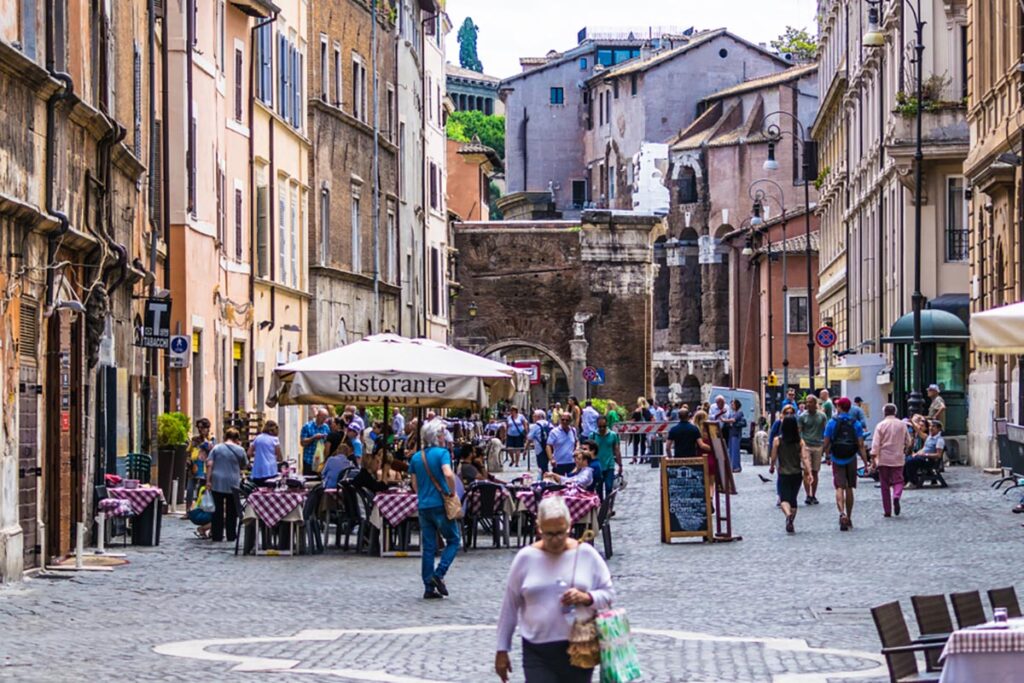
Upon taking in the grandiosity of the town, one other thing became clear: Rome is an incredibly important town when it comes to Jewish history, especially within the former Jewish ghetto, the segregated area where Jews were allowed to live following a papal decree in 1555.
Today, Rome has the largest Jewish community in the country, boasting some of the best kosher food in the world.
Before your trip, here’s a breakdown of what to see, where to go, and of course (because no Jewish guide would be complete without it), where to eat while visiting the Italian capital.
Where to go
The Roman Ghetto
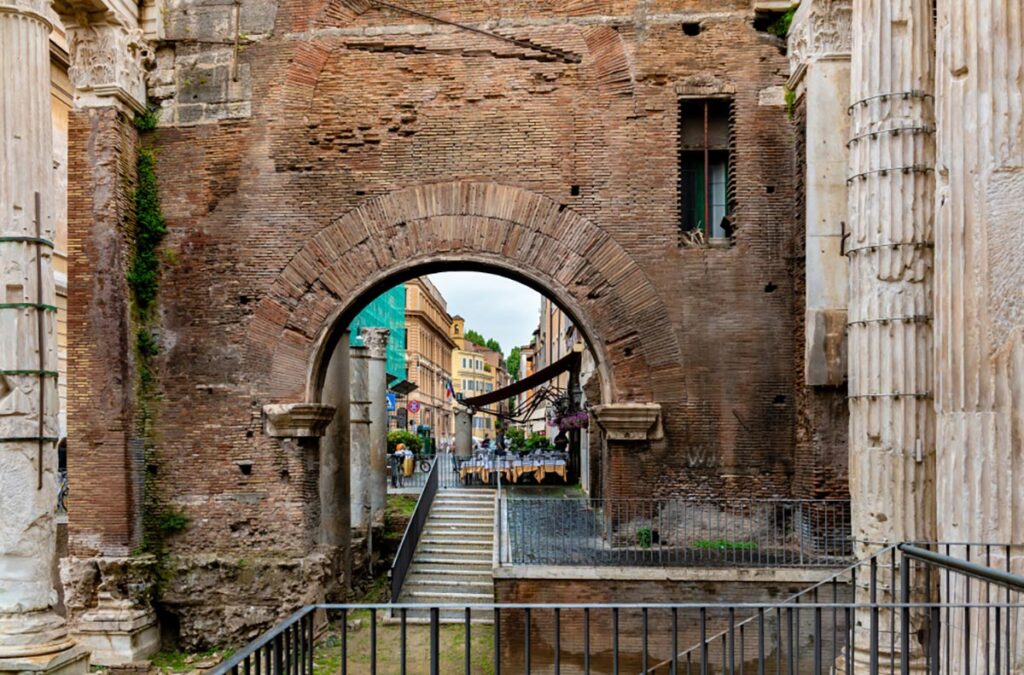
Conversations about Roman Jewish life often center around the Roman Ghetto, which is bordered by Via del Portico d’Ottavia, Lungotevere dei Cenci, Via del Progresso and Via di Santa Maria del Pianto.
Established in 1555 by Pope Paul IV, the area — one of the most undesirable in the city at the time— was basically a walled quarter with actual gates that were locked at night. Jews weren’t allowed to leave after curfew.
Inside the ghetto, the rights of Jews were heavily restricted. They weren’t allowed to own property and were only permitted to work at unskilled jobs (such as fishmongering and pawn breaking). They also had to endure horrible hygiene issues within the ghetto.
After the proclamation of the Italian Republic in 1849, the ghetto was officially liberated, but people continued to live there. During World War II, on October 16, 1943, the Nazis raided the area, rounding up over 1,000 Jews and sending them to Auschwitz. Only 16 of those people survived.
Today, the ghetto serves as a celebration of Jewish life and culture within Rome, having effectively become one of the most important landmarks in the city and home to plenty of Jewish businesses.
Here are the places you can visit:
Portico of Octavia
The Portico di Ottavia, which originally consisted of an arch and an internal section that housed a fish market, was the focal point of the Jewish ghetto.
Historically, Jews were not allowed to walk past the arch after curfew. When the Nazis rounded up the Jews for deportation, they did so right by the Portico, which is why a nearby street is now called Largo 16 Ottobre, commemorating the date of the raid.
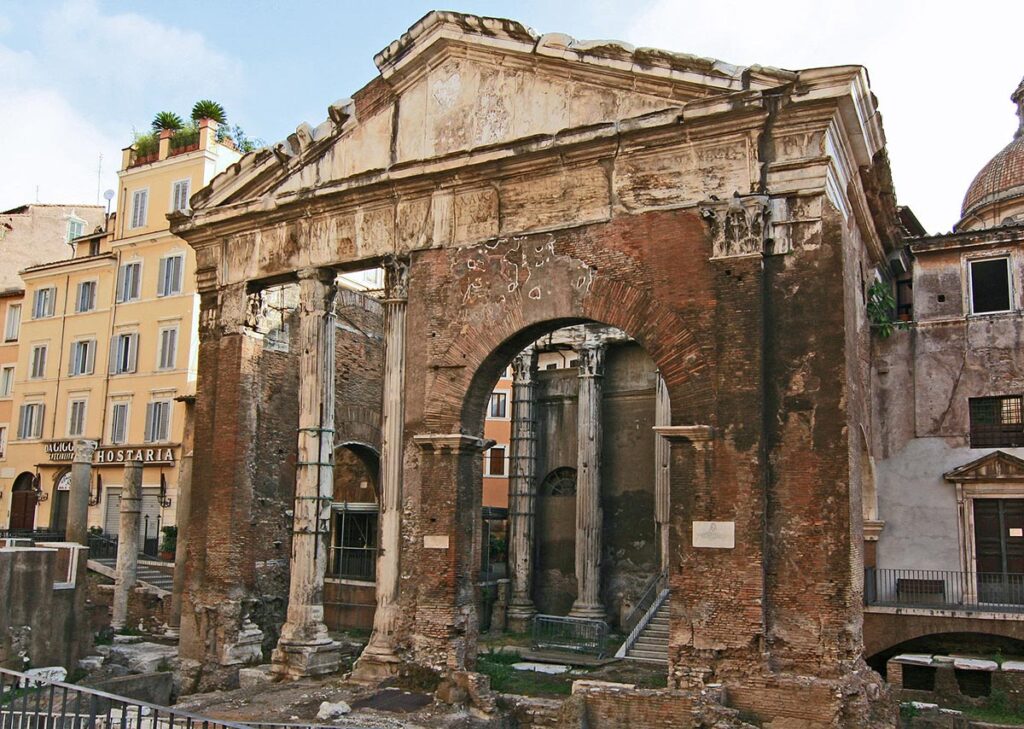
Stumbling Blocks (Pietre d’Inciampo)
Within the area that comprised the ghetto, you’ll see the Pietre d’Inciampo, cobblestones that commemorate the lives of those who were deported and killed by Nazis during the Holocaust. German artist Gunter Demnig is behind the effort, which has been activated across other European countries as well.
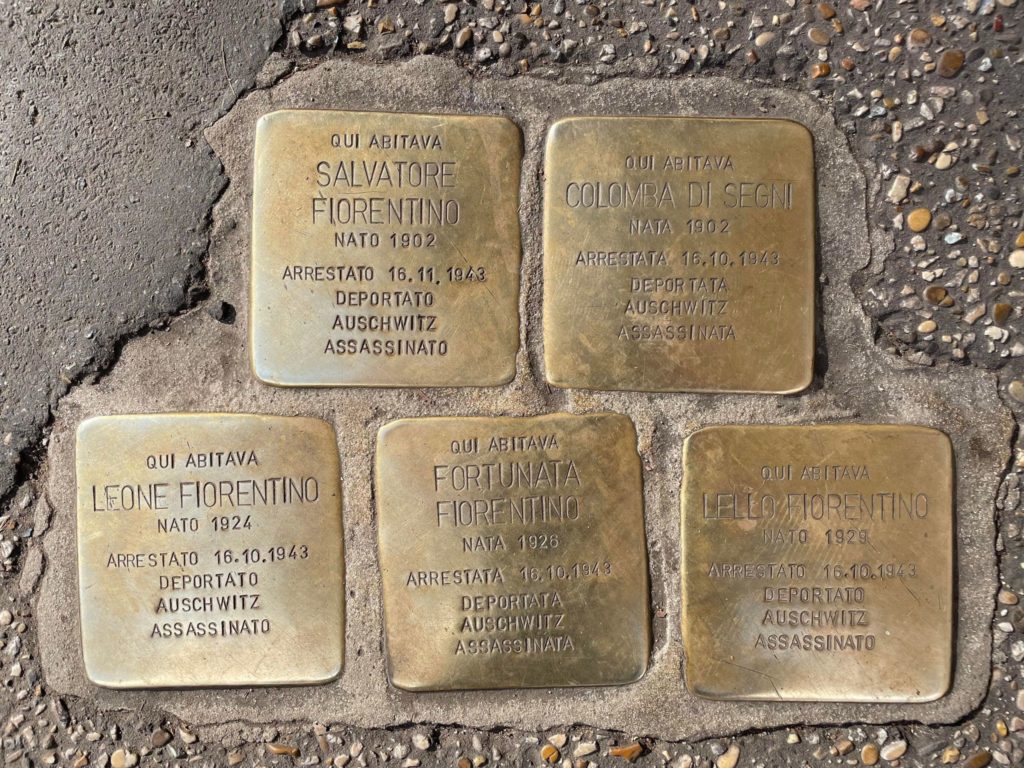
The Turtle Fountain (Fontana delle Tartarughe)
The Turtle Fountain (Fontana delle Tartarughe) was built during the Italian Renaissance by architect Giacomo della Porta and sculptor Taddeo Landini to supply the population with drinking water.
While the original plan was to construct the fountain near the market inside the ghetto, nobleman Muzio Mattei, who was part of the committee behind the effort, convinced organizers to move the location to Piazza Mattei, where he lived with his family (interestingly enough, although not Jewish, the family lived inside the Jewish quarter).
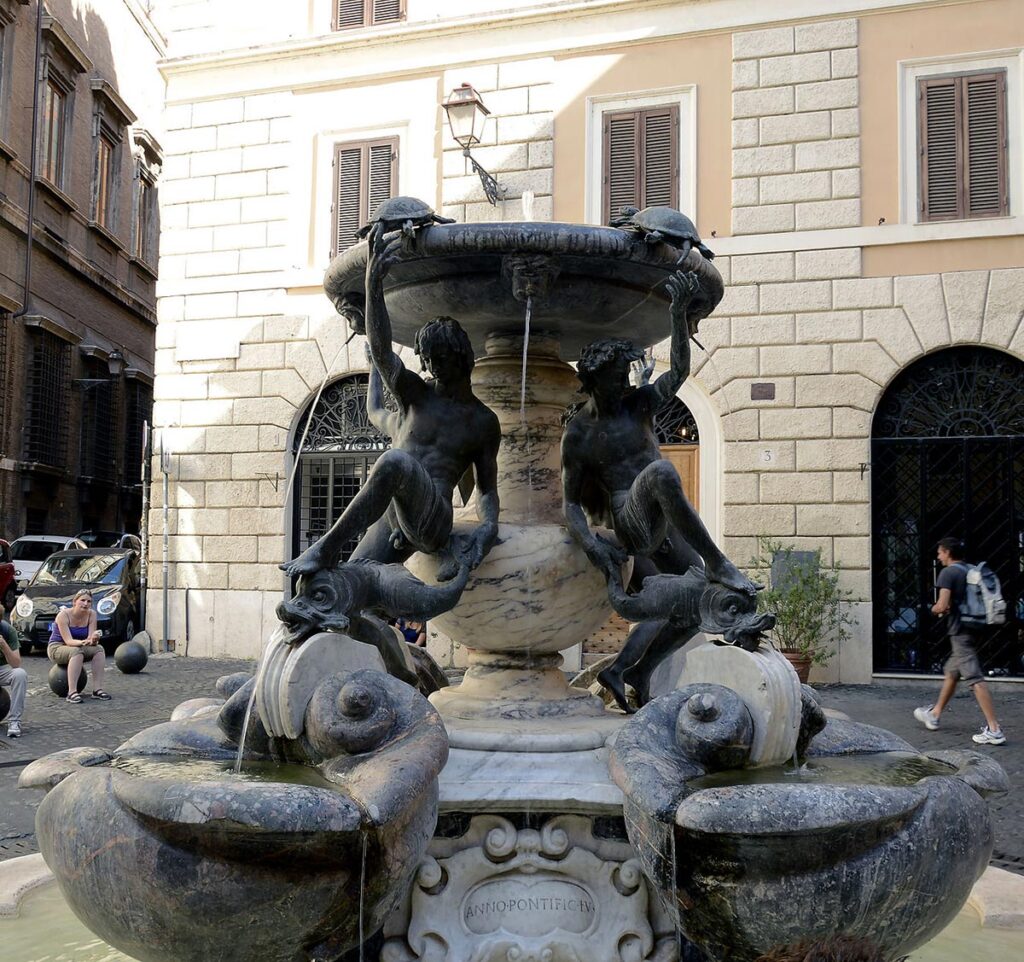
The Great Synagogue and Jewish Museum of Rome
The Great Synagogue of Rome, the city’s largest synagogue, was also built within the former Jewish ghetto. The ghetto’s synagogue had to be demolished to make way for the new structure, which happened after Jews were finally granted citizenship.
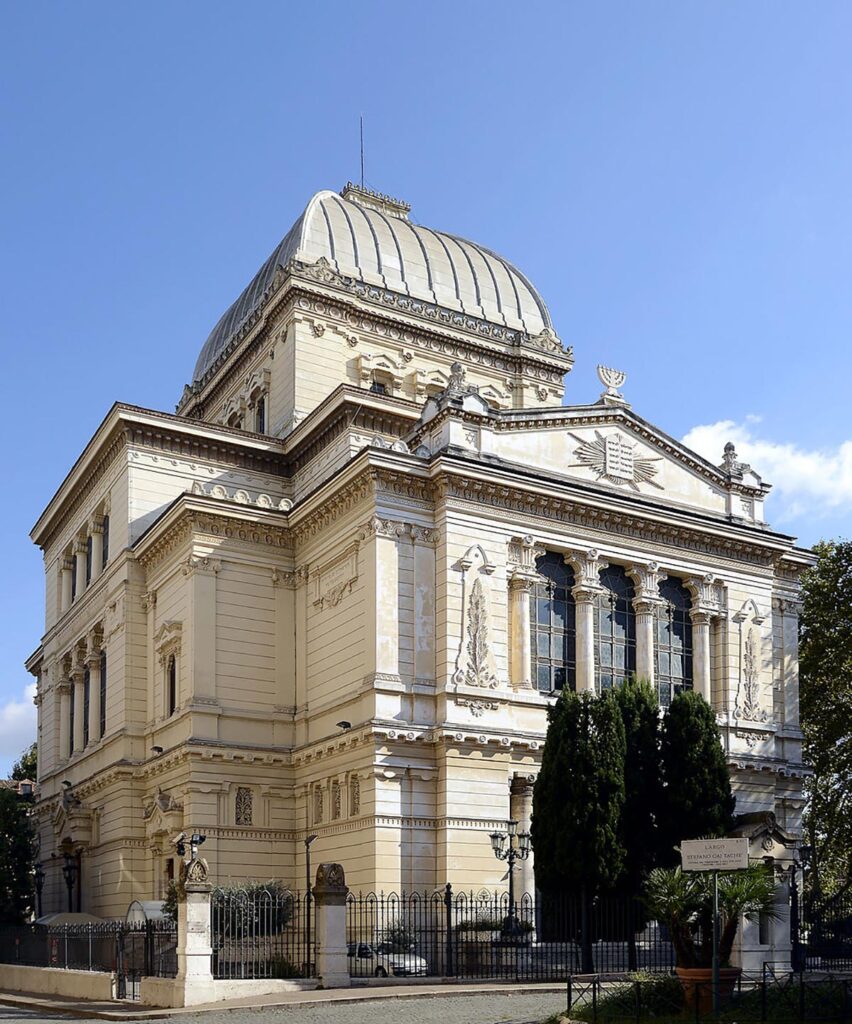
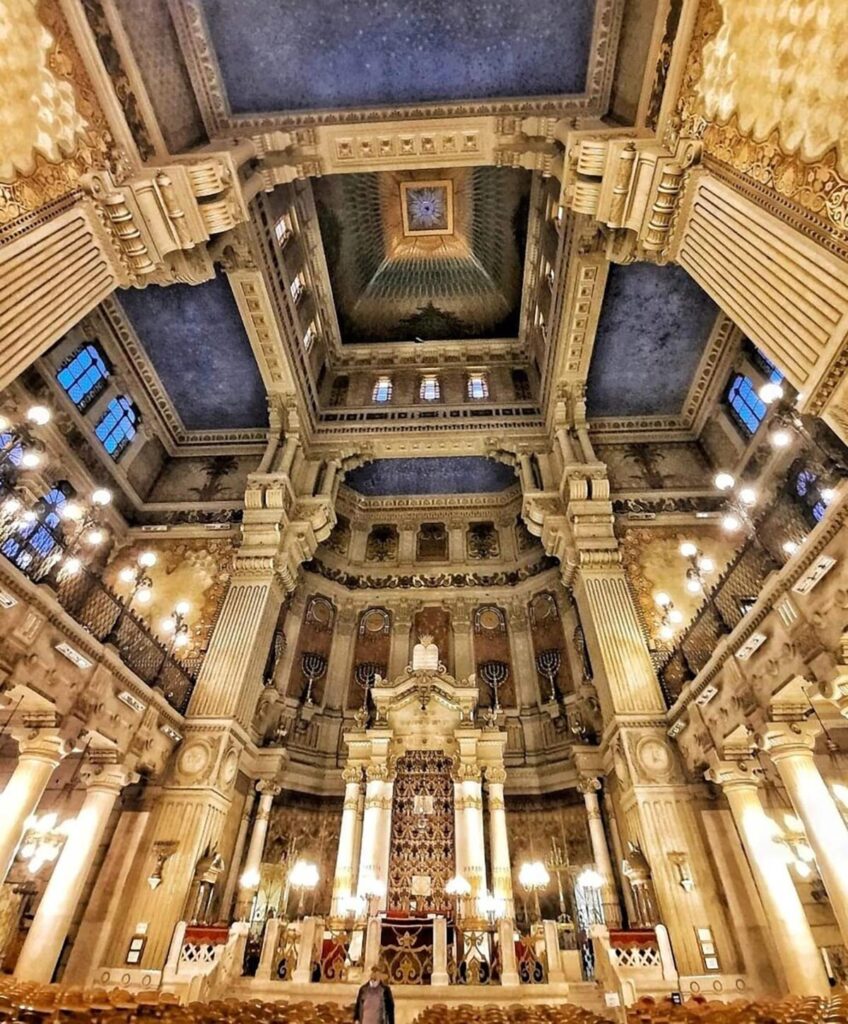
Constructed in 1904, the synagogue overlooks the former ghetto, and it is now also the home of the Jewish Museum of Rome (Museum Ebraico di Roma), where the history of the community is explored in detail.
Inside the museum, you can see a ton of historical artifacts, including manuscripts, liturgical furnishings and historical books. There are a total of seven rooms on site, each one dedicated to a different theme and worth exploring all on its own.
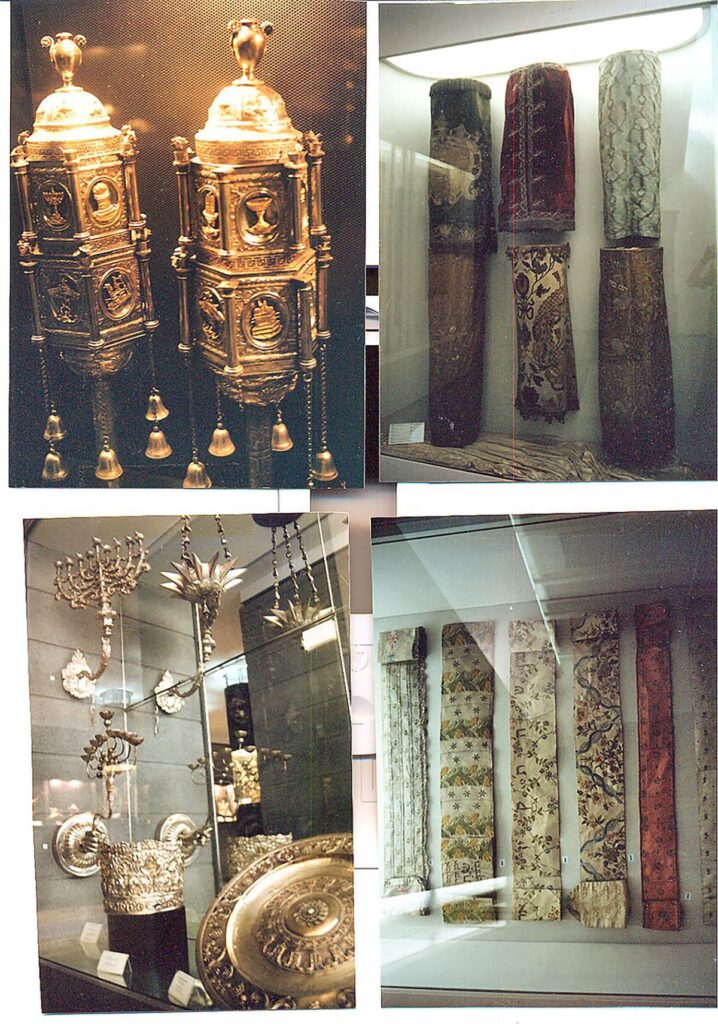
During your visit, be sure to also check out the Spanish Temple inside the synagogue, which was set up in 1932 as a way to honor the Jews who were expelled from Spain in 1492.
Arch of Titus
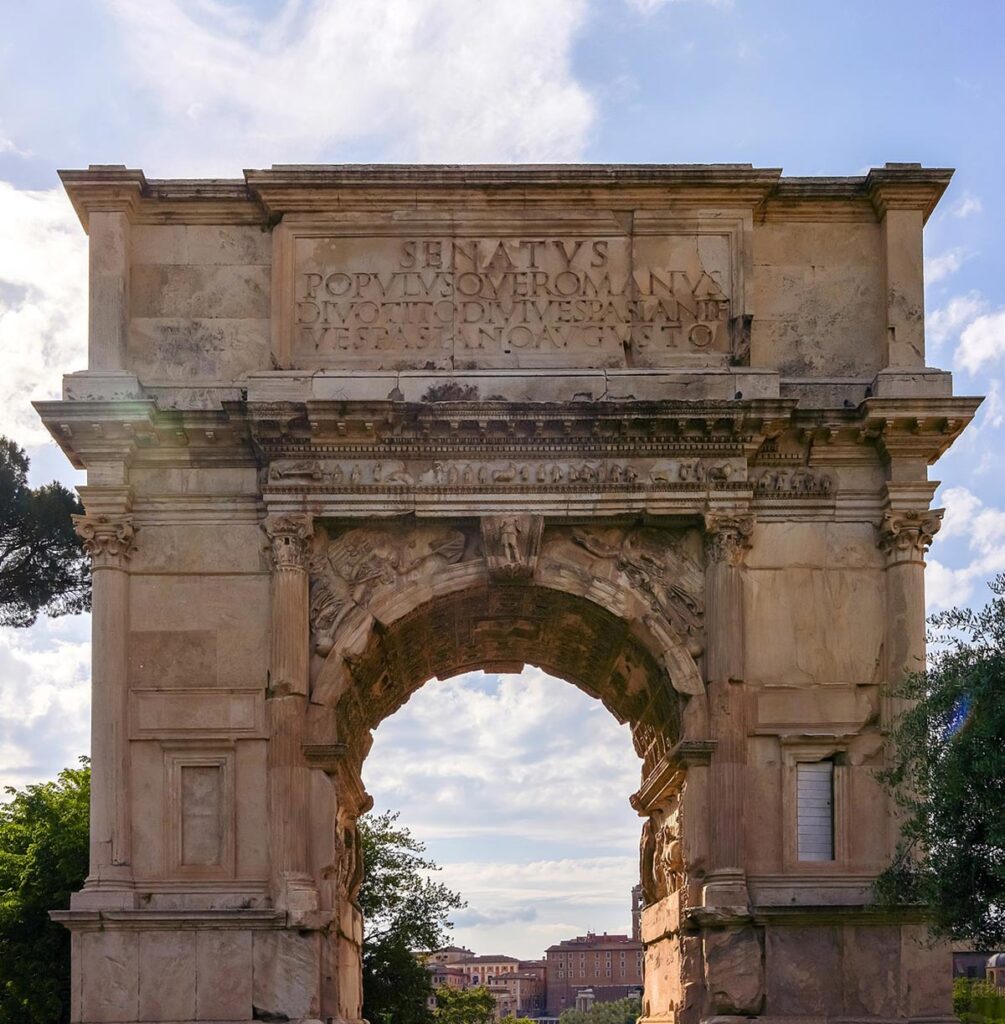
About a 20-minute walk from the center of the former ghetto is the Arch of Titus, which was built in 81 C.E. by then-Roman Emperor Domitian in honor of his older brother Titus’ victory over a Jewish rebellion in Jerusalem.
The arch features panels that portray a celebratory procession held in 71 C.E. following the Roman conquest of Jerusalem and destruction of the Jewish Temple.
The structure is known for its depiction of the menorah, which has become a symbol recognizing Jews in the diaspora. This iconic menorah was used as a model for the candelabra that appears in the Emblem of Israel.
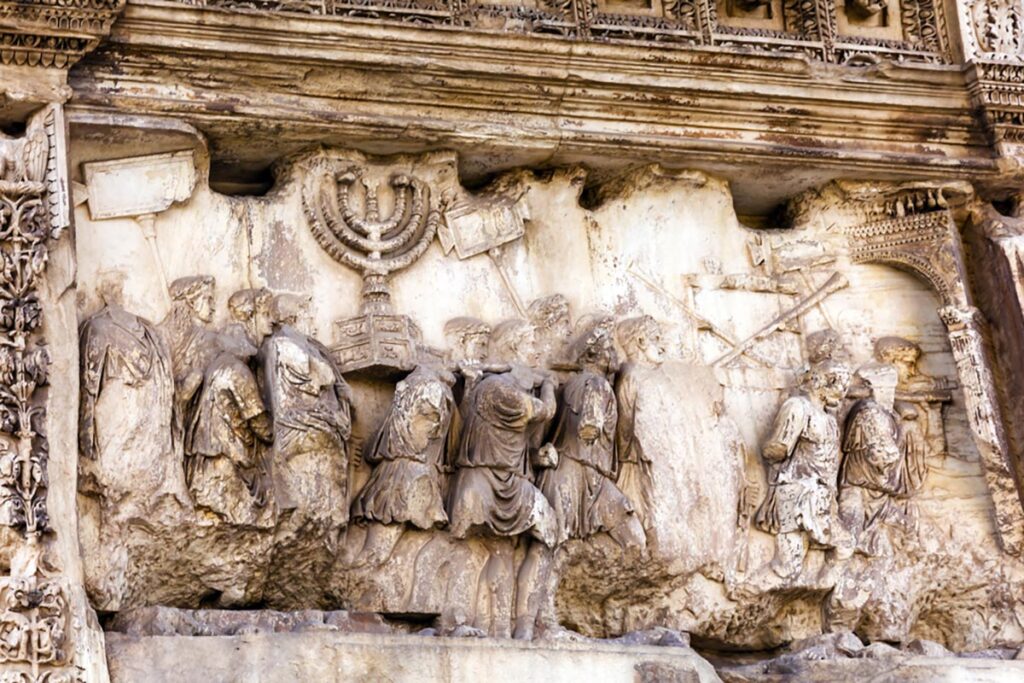
The fate of the original menorah from the Temple in Jerusalem remains a subject of historical intrigue and speculation, with various theories surrounding its disappearance:
Jewish Catacombs
In 1918, historical diggings uncovered the first known Jewish catacombs in Rome. Today, there are about six known catacombs, with only two open to the public: one in Vigna Randanini and the other in Villa Torlonia, both a 20 to 25-minute drive from the former ghetto.
These ancient catacombs offer a unique glimpse into ancient Jewish burial practices and are an essential part of Rome’s Jewish heritage. You might want to read up on the site before visiting to fully understand its historical and cultural importance.
Tiber Island (L’Isola Riberina)
Crossing the Fabricio bridge from the Jewish ghetto, you’ll reach Tiber Island (L’Isola Tiberina), a boat-shaped destination found on the River Tiber.
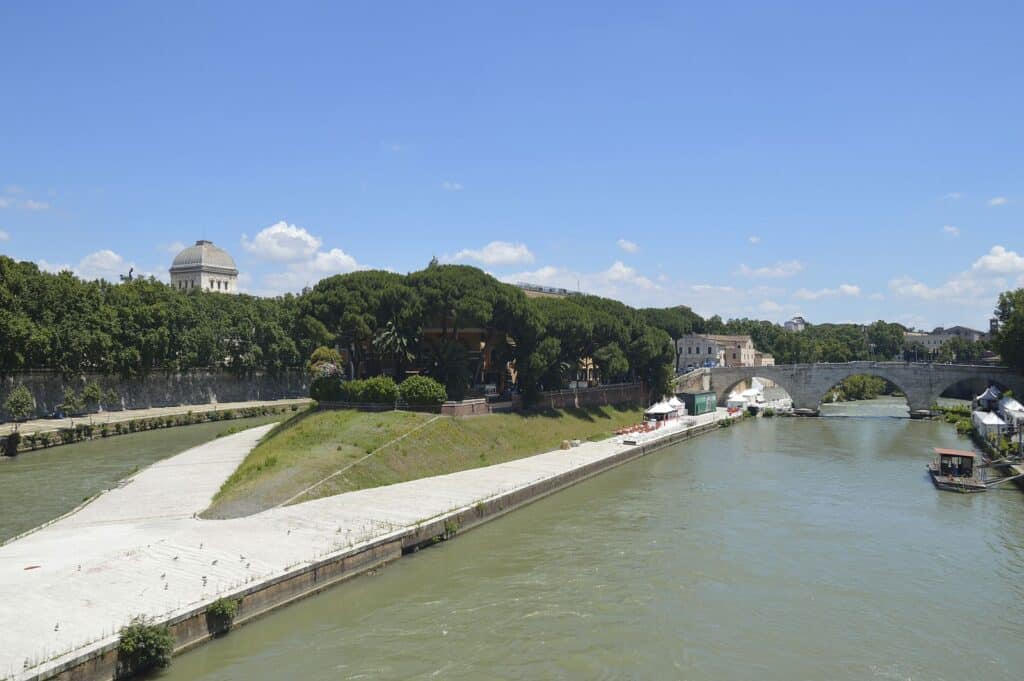
The island used to be home to two hospitals: Fatebenefratelli, which still stands today, and the Israelite hospital, which has since relocated. During the Holocaust, Fatebenefratelli sheltered Jews by diagnosing them with a made-up disease called Syndrome K.
According to historical accounts, Vittorio Emanuele Sacerdoti, a Jewish physician, was able to work on-site using false papers.
When the Nazis invaded, he brought patients from the Israelite hospital under his care and assisted others in finding refuge by diagnosing them with Syndrome K, a fabricated contagious disease that he made up.
Where to eat
There are a ton of kosher restaurants in Rome, making the city an ideal European destination if you keep kosher. All of the restaurants listed below are kosher.
Most of the kosher restaurants are located inside the former ghetto, starting with the famous Ba’Ghetto, which markets itself as the oldest Jewish dining destination in town serving Judeo-Roman cuisine.
In 2010, Ba Ghetto Milky opened to much delight, offering diners a dairy alternative to the meat-heavy menu served at the original franchise.
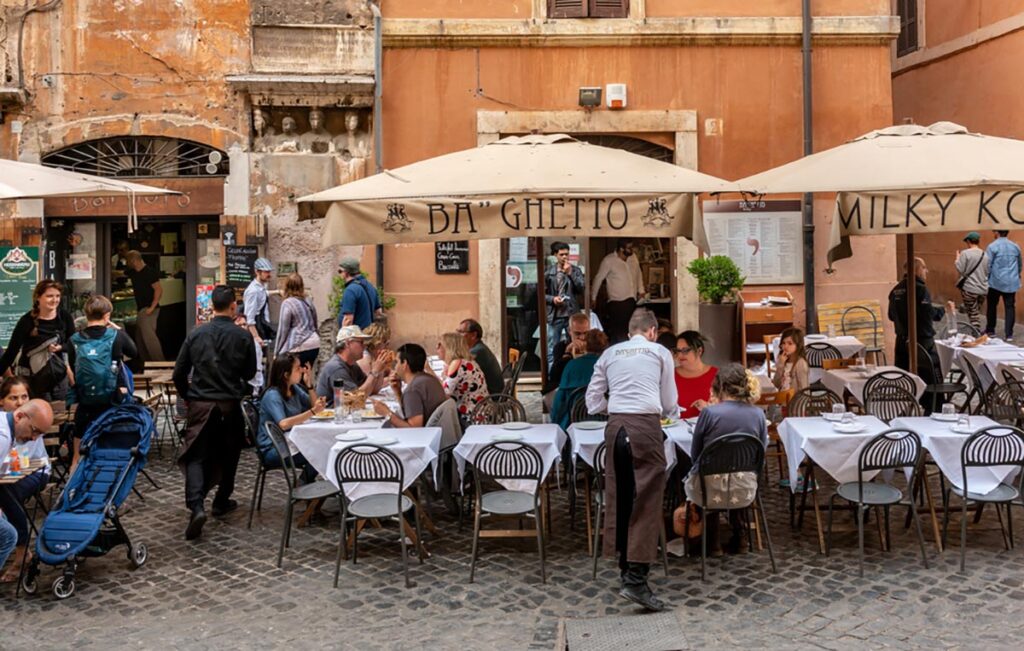
There’s also Su Ghetto, where you can enjoy classics like hummus, tabouli salad, dips and fried artichokes but also indulge in modern takes of dishes.
Next door to Ba’Ghetto is Bona Pizza. It’s the perfect place to enjoy pizza al trancio (pizza by the slice) while walking around the Jewish area. Don’t forget to also try the famous carciofi alla giudia served here.
For delicious burgers, check out Fonzie, also located inside the former ghetto.
If you’re craving seafood, consider a visit to Renato al Ghetto, where you can indulge in traditional Jewish-Roman dishes with a focus on fish.
To enjoy a delicious meal in an upscale setting, head to Yotvata, La Taverna del Ghetto and Bellacarne.
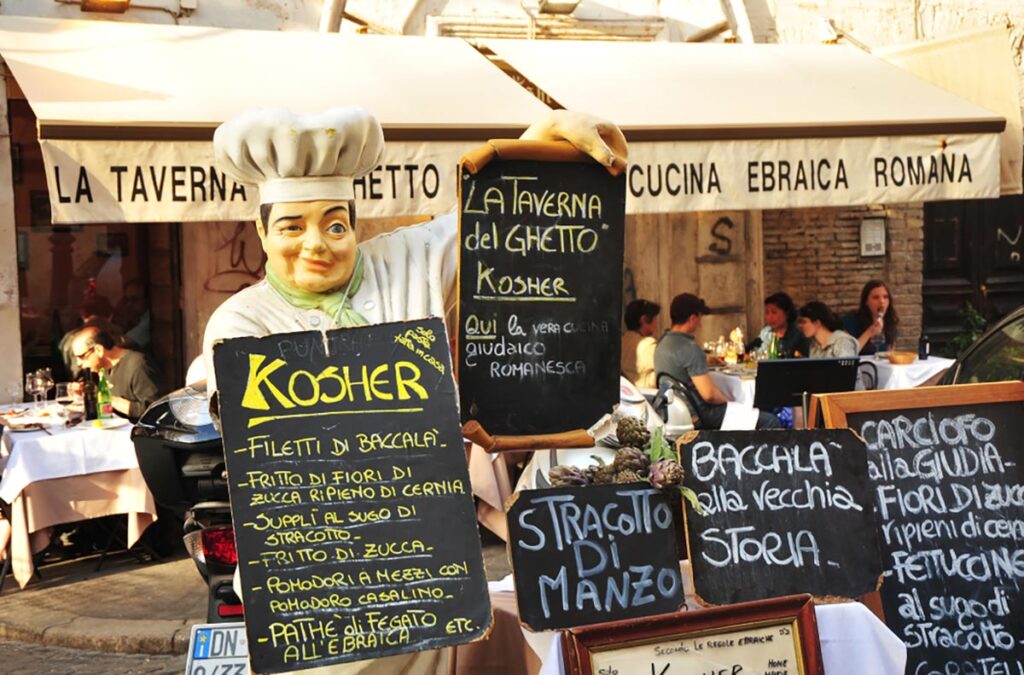
Other standouts inside the ghetto include Nonna Betta (pay attention to the beautiful art on the wall), Daruma, a sushi spot, and Cremeria Romana, which has unforgettably delicious ice cream.
Speaking of dessert, at Pasticceria Boccione, a compact bakery within the ghetto, you must order Jewish-Roman-style pizza. It’s not what you think it is but is instead a cookie made with almond flour and filled with delicious nuts, raisins, candied fruits, white wine and oil. Gastronomic perfection.
Outside the ghetto, make note of C’è pasta… E pasta! right on the other side of the Tiber River, where you can enjoy fresh pasta of all sorts.

Make it a point to explore the surrounding neighborhood, Trastevere, either before or after your meal. The area is known for its bohemian vibe, excellent boutiques filled with crafty finds and top-notch pubs.
Also outside of the Ghetto is Flour Farina e Cucina, an all-day cafe, and Little Tripoli, which specializes in Middle Eastern cuisine (get the falafel!).
Where to spend Shabbat
While there is no eruv set up in Rome yet, there are plenty of options when it comes to Shabbat-appropriate accommodations.
Food-wise, many restaurants allow you to pay for Shabbat meals in advance or order fare that will last you through the Sabbath. Check out a good list right here.
If you’re looking for Shabbat services or meals, check out the Chabad in Piazza Bologna — note that it’s located about an hour-walk away from the former ghetto.
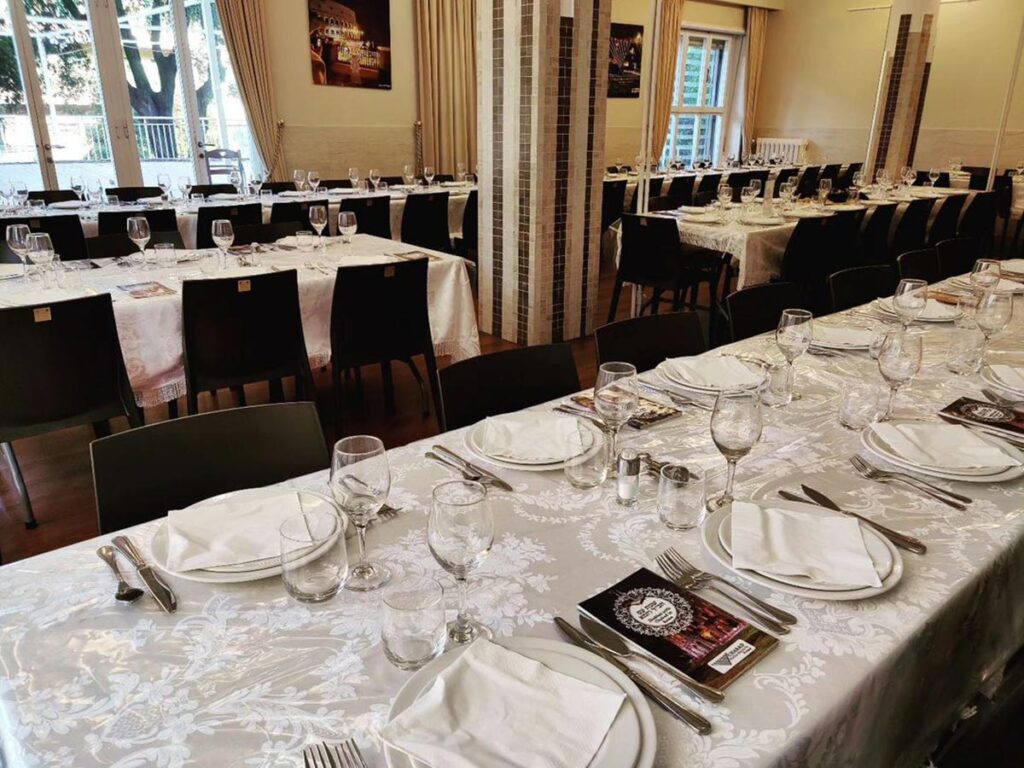
In terms of hotels, you’ll likely be better off staying inside the ghetto, especially if having dinner or lunch in the area, but the beauty of Rome is that, no matter where you stay, you’ll be inches away from a stunning piece of art and a major bit of history — so you could never really make a bad choice!
When will you be visiting Rome? Let us know on Instagram, Twitter, and TikTok!
